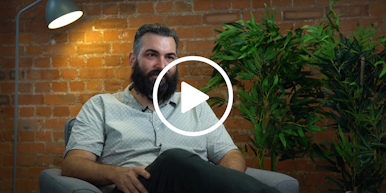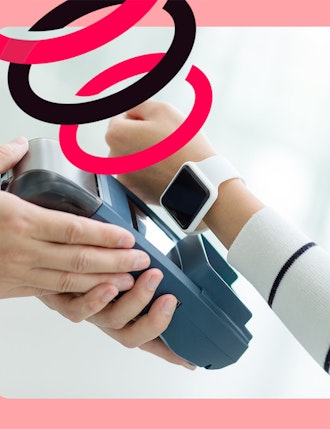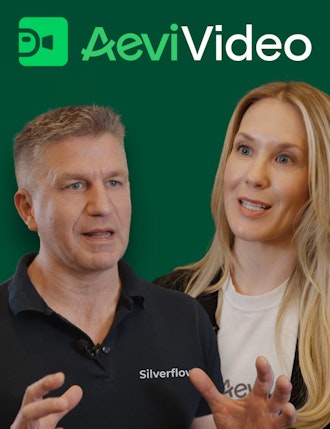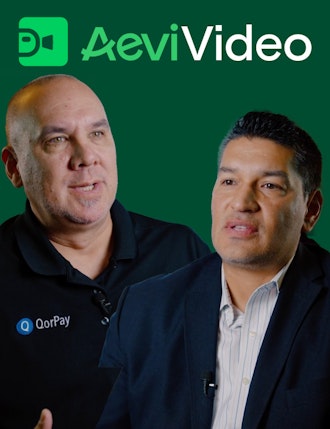The biggest change in payments
Aevi’s VP of Products, Eddie Johnson, sat down with Fintech Finance for their PayTech Show.
“What’s changed in the last two years is that the options are pretty much endless,” said Johnson. “You get to choose how you want to pay when you want to pay, what kickback you get from how you pay, how many payments you want to make for that one purchase – as an industry we need to be able to support that choice.”
Watch the video on YouTube to learn more about:
- Aevi – an orchestration platform for payments
- The biggest changes in payments the last 3-4 years
- The importance of a digital last mile of payments
Video Transcript
Interviewer: “Thank you very much for joining us here today on the Pay Tech Show. Today, we’re going to be looking at payment orchestration and the huge changes that have been going on for both merchants, consumers, and the institutions when it comes to paying. Joining me here today is Eddie Johnson from Aevi. Eddie, how are you doing?”
Eddie: “I’m good, how are you?”
Interviewer: “Very well indeed, let’s get on with it. It’s time to talk about payments orchestration, and I really want to set the scene. Maybe you could tell our viewers a bit more about yourself, your role at Aevi, and Aevi itself?
Eddie: “My name is Eddie Johnson, my current role at Aevi is I’m the VP of product. That means I’m responsible for everything that we bring to market, everything that we sell to our customers, and the future of where we’re going to be going. I’m trying to keep my eye on what we need to be prepared for in the industry. In terms of Aevi themselves, we are an in-person payment specialist company historically, and that’s kind of evolved into being an orchestration platform for payments and a platform that brings different types of payments together for our customers who tend to be people who want to service merchants. We’re one step back from the merchant front end, but we’re obviously thinking about the merchants on behalf of our customers.”
Interviewer: “That’s absolutely brilliant. I love that kind of looking at the very end of the chain because that’s where the human story is, and a lot of merchants are in a brand new payment ecosystem that a lot might not understand because of the huge changes in payments now. Before we go on and discuss that kind of futurist perspective that I know you have, let’s again set the scene and look at payments over the last couple of years. What have been the biggest changes for you?”
Eddie: “Yeah, I mean, payments have historically been a very slow-moving industry, and I remember when I joined the payment space, whatever it was, eight, nine, ten years ago now. I came from a digital background, and I really enjoyed coming into payments. I used to joke with my colleagues that I only need to be four years out of date, and I get to be bleeding edge. But really, the change that’s happened in the last three or four years is entirely exploded. The reins have come off, and payments have started moving at a pace which befits the consumer.
The biggest reason for that is because of the shift towards the consumer themselves being the point of focus. I think the biggest change is, if you look over the last five to ten years in payments, we’ve moved from a position where payments are a luxury, card payments, digital payments is a luxury in-store, and it’s seen as something that if you walk into a store as a consumer and they can accept the type of payment you want, then you’ve hit the jackpot, you’re lucky, right? Whereas now, as a consumer, I walk into a store and I expect to pay however I want to pay, and if I can’t pay how I want to pay in that store, I’ll go to another store. I’ve got the choice, I’ve got the flexibility, I’ve got the power in my hands as a consumer. So what’s happened is the payments industry has had to rush to keep up with that. We’re now starting to try and get ahead of the curve to really try and push the payment space forward, rather than just react to what the consumers are shouting about.
That’s driven in many ways by many different things. You’ve got the payments disruptors coming up, you’ve got the smaller payers now able to play in the payment space, and the full digitization of of payments has been a big driver for both consumers and merchants, particularly in light of the pandemic over the last two years. Going fully digital has opened up the playing field for a broad range of payment experiences. The options for payment are now nearly endless, giving consumers the ability to choose how and when they want to pay, what kickbacks they receive, and how many payments they want to make for a given purchase. As an industry, we need to be able to support these choices.”
For media enquiries contact:
Interested in reading more around this subject? Here are some useful articles…















